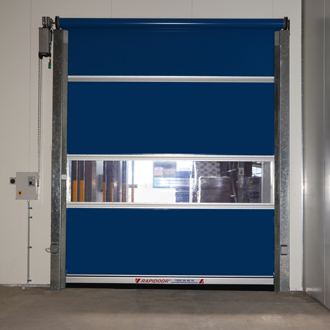The Evolution of High Speed Doors. Have you ever wondered how high speed doors came to be and why they’re so essential in various industries today? Let’s take a stroll down memory lane and explore the fascinating history of these remarkable innovations.
The Early Days: 1950s-1960s
Our journey begins in the post-war era, a time of significant industrial growth. As factories expanded, so did the need for efficiency. Traditional doors were often slow and cumbersome, leading to delays in operations. Enter the first high-speed doors, designed to facilitate quick access in manufacturing and warehousing environments. These early iterations were all about improving workflow while providing a degree of insulation against the elements.
Technological Breakthroughs: 1970s-1980s
Fast forward to the 1970s and 1980s, and we start to see some real innovation. The introduction of flexible materials like PVC changed the game, allowing for faster operation and better sealing. This period also marked the dawn of automation, as electric motors and automated systems began to take centre stage, enabling doors to open and close without the need for manual effort.
A Surge in Popularity: 1990s
By the 1990s, high speed doors were gaining traction across various sectors, from food processing to pharmaceuticals and cold storage. The advantages were clear: improved energy efficiency and streamlined operations. With this growing popularity came a need for safety standards and regulations, ensuring that installations were not just efficient but also safe for employees.
Modern Innovations: 2000s-Present
In the new millennium, high speed doors have undergone impressive transformations. Smart technology has become a key player, with advanced sensors enabling automatic opening and closing based on movement detection. There’s also a stronger focus on energy efficiency, as industries strive to reduce their environmental footprint. Modern high speed doors are now designed with enhanced insulation and sealing capabilities, further contributing to energy savings.
Customisation has also become a hallmark of contemporary high speed doors. Whether for clean rooms, warehouses, or retail spaces, today’s options can be tailored to meet the unique needs of different environments.
Current Trends: Integration and Sustainability
Looking ahead, we see a trend towards integrating high speed doors with broader building management systems. This synergy allows for enhanced control and efficiency, streamlining operations even further. Additionally, as sustainability takes centre stage in global discussions, manufacturers are focusing on environmentally friendly materials and energy-efficient designs.
The Evolution of High Speed Doors Summary
From their humble beginnings to the high tech solutions we see today, high speed doors have come a long way. They not only enhance safety and efficiency but also contribute to energy conservation in our increasingly eco-conscious world. So, the next time you zip through a high speed door, take a moment to appreciate the innovation that went into its creation!

